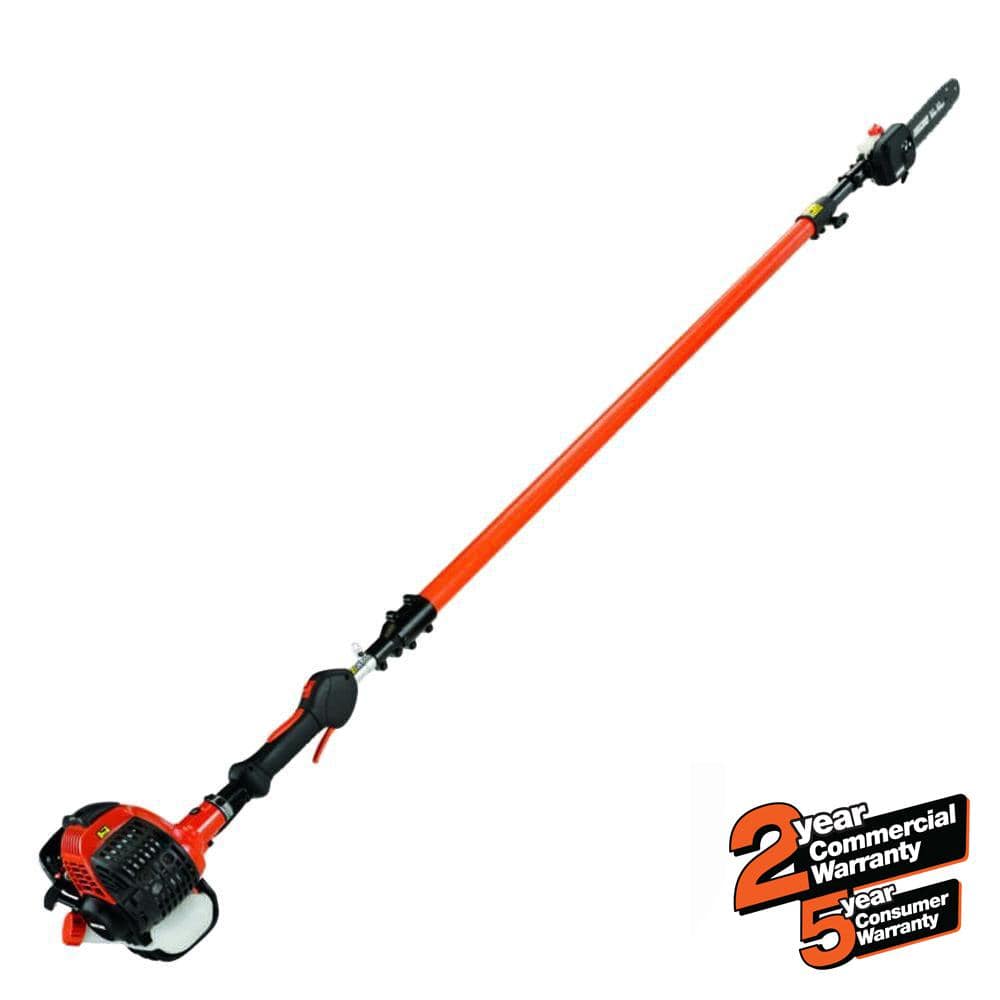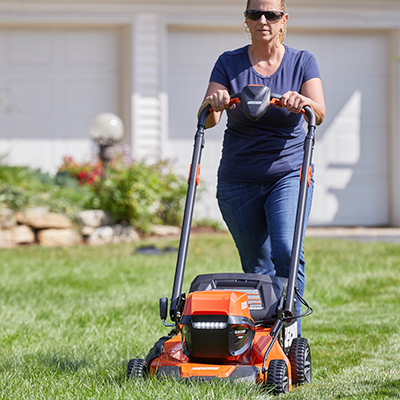How to Maintain Outdoor Power Tools

Last updated September 7, 2023
Outdoor power tools like chainsaws, string trimmers, hedge trimmers and leaf blowers are time-savers, allowing you to power through tasks that would take much longer with ordinary hand tools. But when power tools are not properly stored and need repairs, those time-savers become time-wasters.
In this guide, you’ll learn how to extend the life of your outdoor power tools with proper care.
Before cleaning and maintaining your outdoor power equipment, and before using for the first time, it’s important to review the manufacturer’s instructions. Always turn off gas engines and disconnect electrical power sources, whether cord or battery, before working on power equipment.
Table of Contents
Care for Gas Engines
Battery Powered Tool Tips
Outdoor Extension Cord Tips
How to Maintain Chainsaws and Pole Saws
How to Maintain Hedge Trimmers
How to Maintain a Leaf Blower
Care for Gas Engines

The best practice to maintain the life of your outdoor power tools is to drain the engine of gasoline when you're through with the job.
Ask yourself, "when will I use this next?" And if the answer is more than a month away, go ahead and drain the gasoline.
The culprit for small engines is usually the biofuel additive ethanol. Ethanol is hygroscopic, meaning it absorbs water from the air. Even the air in a half-empty gas can or engine, over time, is enough to contaminate fuel and damage the engine. Contaminated fuel gums up the carburetor, the hoses and the engine. The water then oxidizes and breaks down the gaskets and fuel lines.
Most small engines run better and last longer when powered with ethanol-free gas. This gas can be purchased at many gas stations or at your local Home Depot.
Tips for Gas-Powered Tools:
- Use a fuel stabilizer for short-term storage. For periods of longer storage, drain the gas tank and then run the engine until the fuel system is empty.
- Routinely check and change oil. Never leave old oil for the winter. The crank case can be left empty and refilled before first use in spring, but don’t forget and crank without oil. Running an engine without oil will ruin it.
- Clean and replace spark plugs.
- Clean any corrosion or carbon deposits with a wire brush or scraper.
- When cleaning, take extra care around the fuel cap, oil plug and air filter inlet areas. It's important that no debris enters these openings when the caps or covers are removed.
- Some manufacturers sell winterizing or maintenance kits that contain parts, like filters and hoses, that need to be periodically changed. Check manufacturer’s instructions for your product.
When storing gasoline, be smart about the amount of fuel you need. Unless you have a riding lawnmower, there is no need to keep a full 5-gallon gas can around. As a rule of thumb, expect a properly stored can of gasoline to remain fresh for between one and three months.
If you frequently use gasoline-powered tools, this isn't usually a problem. However, digging tools like tillers and cultivators may not be used for six months at a time. Check out our guide on safely storing chemicals, and that includes gasoline.
Gasoline Storage Tips:
- Buy only as much fuel as you anticipate using over the next few months.
- Don't store gas for more than three months.
- Align your fuel needs with the seasons. On the first day of spring, and first day of each subsequent season, empty the gas can and replace the fuel. This is a good time to drain the engines of all your gas-powered outdoor tools.
- Excess gasoline in good condition can be poured into a gasoline-fuel truck or car. For guidance on safe disposal of other fuel mixtures and products, contact your local community's fire department, recycling center or hazardous waste disposal center.
Battery Powered Tool Tips
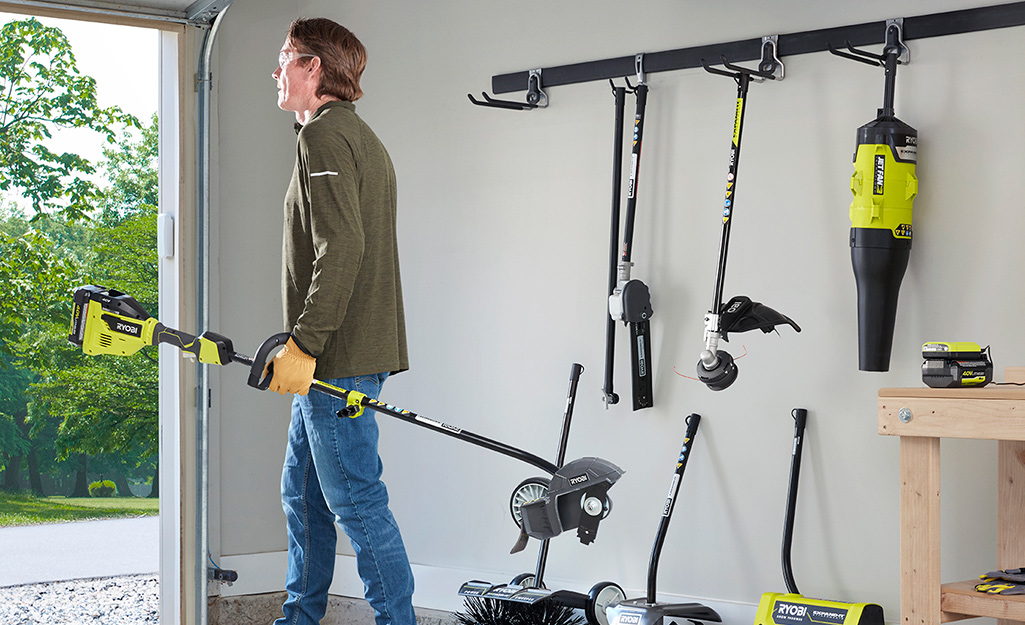
Cordless battery-powered tools are lightweight and easy to use. Unlike traditional gasoline-powered tools, there are no worries about using and storing fuel. The main concerns are keeping the batteries charged and the equipment clean.
For best performance from your battery-powered outdoor power equipment, keep these tips in mind:
- Keep battery charged. Make sure it’s completely charged.
- Regularly use the battery. Frequent use is better for the battery.
- Store the battery in a cool, dry place when not using. It should be protected from extreme heat and cold.
- When cleaning battery-powered tools, be sure all air vents are clean and open to dissipate heat.
- Charge lead-acid batteries, like starting batteries for riding mowers, in areas with adequate ventilation, and not in your living area, due to toxic gases that can be released.
Outdoor Extension Cord Tips
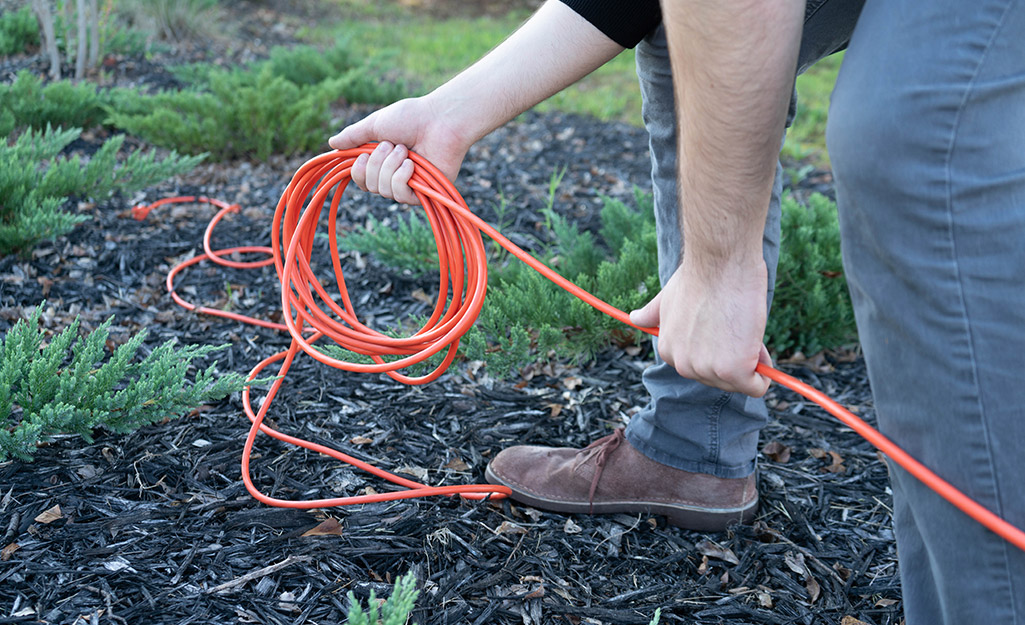
Follow best practices when using extension cords with your corded outdoor power tools. Routinely check for damage. It’s always better to replace a broken cord than to cause a fire, destroy the motor in your equipment, or worse, injure yourself or another person.
How to Maintain Chainsaws and Pole Saws
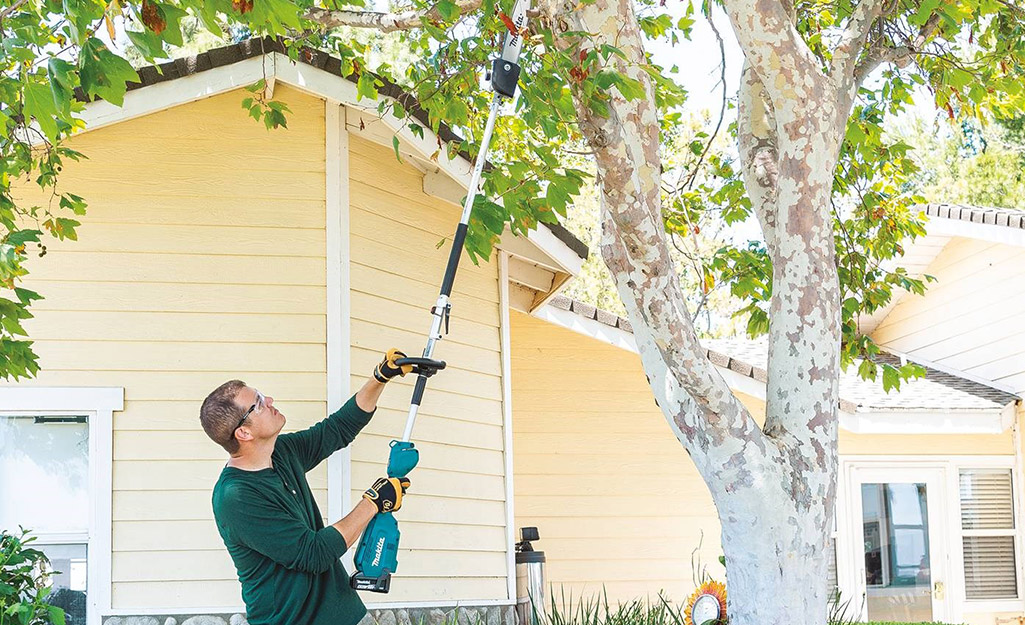
Ensure your chainsaw runs smoothly by taking time to clean and perform basic maintenance before and after each use. Keep your chainsaw in top condition by following manufacturer's instructions according to its power source.
- Always charge and store the battery on your cordless chainsaw exactly as recommended. Fuel your gas chainsaw with the type and amount of fuel required.
- Before performing any cleaning or maintenance on your chainsaw, make sure it is turned off and completely disconnected from power. Remove the battery on cordless models, unplug electric models and disconnect the spark plug on gas models. Be sure gas engines are cool to the touch.
- Check that the bar and chain are properly lubricated according to the manufacturer's instructions.
- Clean the chain brake, if applicable, and wipe excess debris off the bar and engine during and after use.
- Keep air intake slots clear.
- If you notice the bar is starting to show signs of wear, follow the manufacturer's instructions for rotating the bar.
- On electric chainsaws, double-check that the cord is not damaged.
- If the chain on your tool becomes dull, it is sometimes easier and less dangerous to simply replace the chain rather than try to sharpen it at home. Learn how to sharpen your chainsaw.
- Always check for any loose screws and nuts on the equipment before use. These are especially important to look for if your chainsaw feels like it has been vibrating more than usual.
- On gas chainsaws, check the fuel filter and change when necessary and according to the manufacturer’s recommendations.
- Drain the gas and oil completely before storing gas chainsaws for extended periods.
How to Maintain Hedge Trimmers
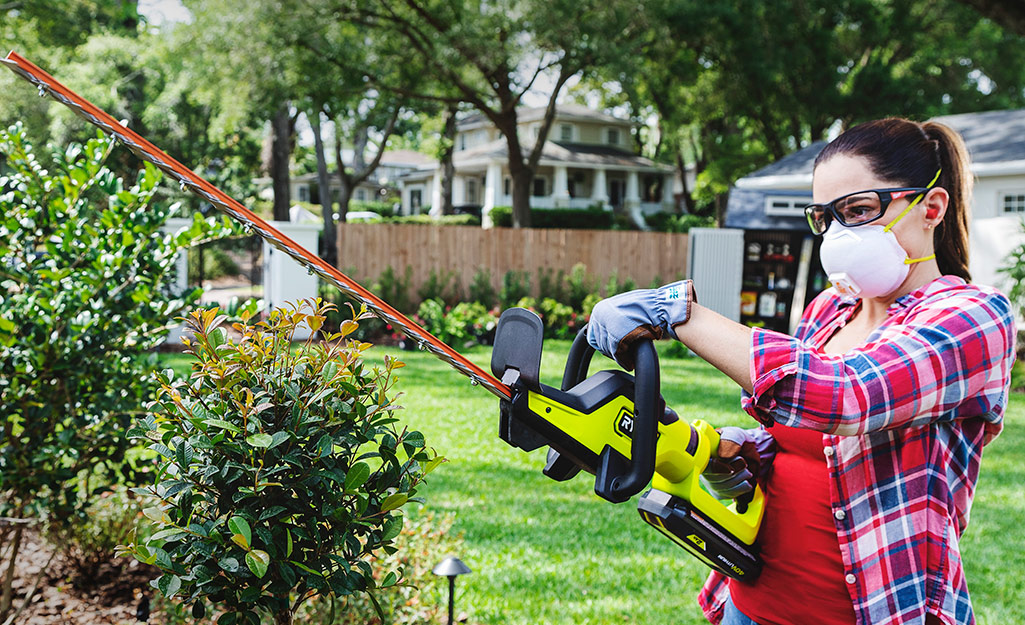
Hedge trimmers get a workout in the landscape. Keep them ready for top performance with best practices and regular maintenance.
Before you get started, keep in mind that hedge trimmer blades are extremely sharp and can cut even if the engine is off and blades are not moving. Always wear sturdy work gloves when handling hedge trimmers and do not allow blades to touch any part of your body.
- Hedge trimmers can be cleaned with a lubricant. Look for products that are safe to use around plant material and apply after each use.
- Check the extension cord and power cord for signs of wear, cuts or other damage before use, and replace cord if any damage is present.
- Keep hedge trimmer blades sharp.
Cutting with dull blades increases jams and reduces cutting efficiency. - Adjust the blades according to manufacturer’s instructions.
How to Maintain a Leaf Blower
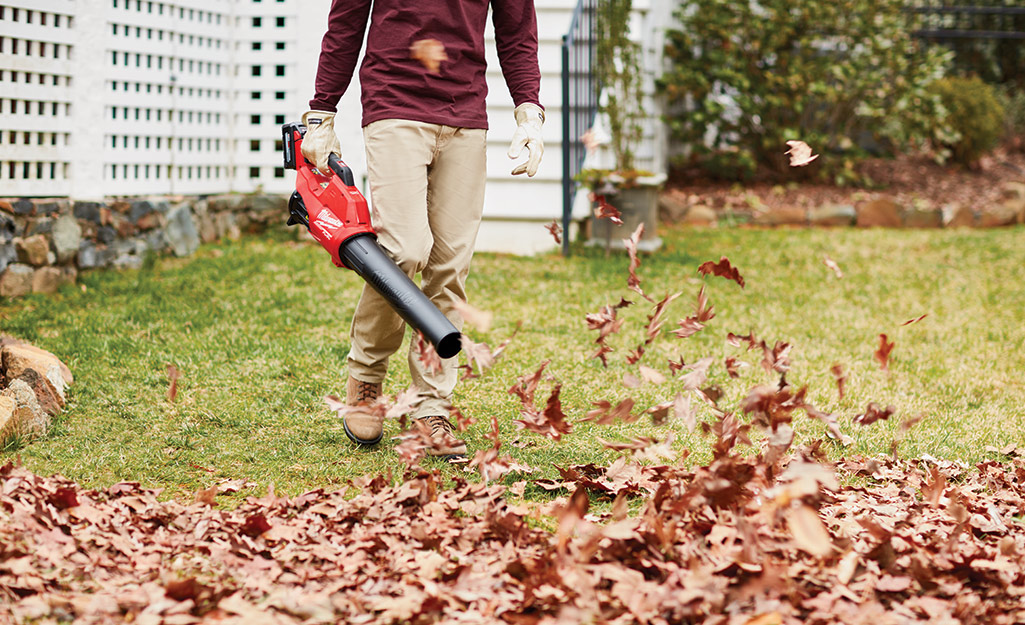
Whether you use a corded or cordless electric or gas-powered leaf blower, it’s important to keep this much-used tool clean and in working order.
Routine maintenance tips for leaf blowers include:
- Clean dust and debris from vents.
- Keep handles clean, dry and free of oil or grease.
- Clean with mild soap and a damp cloth, and avoid using cleaning agents and solvents that can damage plastics and other parts.
Lawn Mower Maintenance Tips
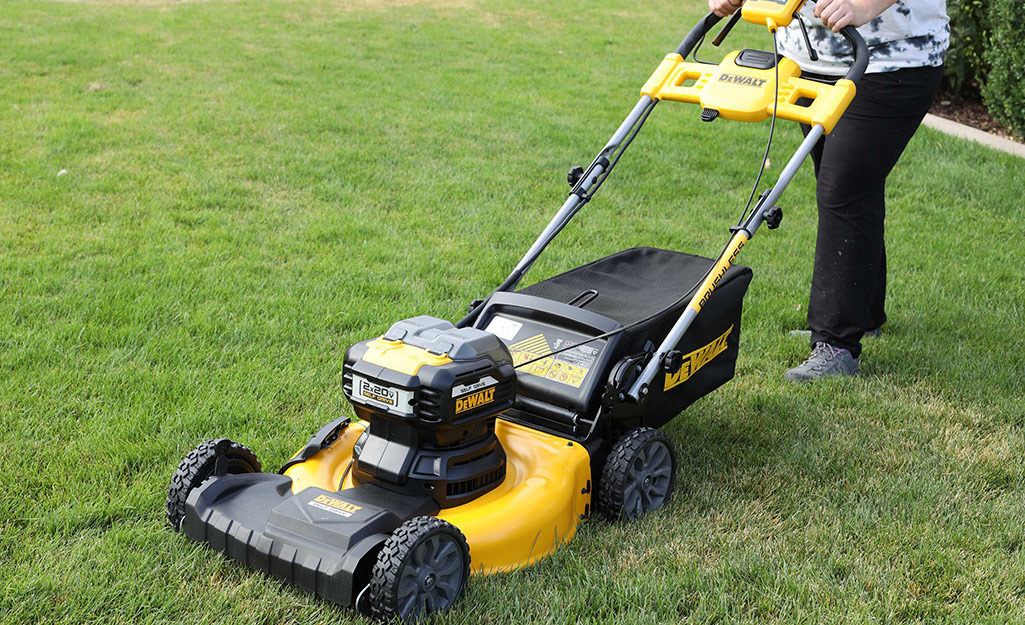
Take time to maintain your lawn mower so that you will be able to keep up yard maintenance. A neglected lawn mower will not only be less effective and have more problems in the short run, it can fail years before a well-maintained mower. Most maintenance tasks take less than one hour to complete and will make a noticeable difference in performance.
Tips for lawn mower maintenance:
- Change lawn mower oil.
- Clean or replace air filter.
- Maintain blade. The Home Depot will sharpen lawn mower blades for you.
- Change spark plug annually.
- Clean your lawn mower. Remove debris, spray with a garden hose, scrub the deck with a soft brush and soapy water, then rinse with a hose. A putty knife is useful to remove stuck-on grass. Dry before storing.
There are two easy steps that will keep your lawn mower working better, longer:
- Always mow a dry lawn.
- Before mowing, clear lawn of visible rocks and items that could damage the mower.
String Trimmer Maintenance Tips

Keep your string trimmer in working condition with these tips.
- Always be sure your string trimmer is off before working on it. For gas-powered trimmers, be sure the spark plug is removed when making any repairs.
- When your string trimmer line breaks or wears downs, it's time to replace it.
- To replace the string, begin by removing the spool from the trimmer's head. Then cut a new piece of string that's about 8-feet long.
- Next, feed one end of the string through the holes in the spool. Then tug to make sure the ends are even.
- Your spool should have an arrow printed on it to show you which direction to wind the string. Begin winding the string around the spool, following the arrow.
- Secure the ends of the string into the notches on the spool and reattach the spool to the trimmer.
- Take care to feed the ends of the string through the holes in the spinning head and tug on each string to release it from the notches.
- If your trimmer has a self-winding head, simply feed the length of string through the spool and rotate the head to wind the string.
- Clean the underside of the shroud.
- Check the attachment and sharpness of the string cutter.
- Check and refill the string spool.
- Inspect auto feed bumper for wear or cracks and replace if needed.
- Lubricate drive shaft.
- Inspect straps and strap connection points.
- Check and tighten nuts and bolts.
For all types of outdoor power tools, in fall and winter, put away equipment in good condition so that when the weather warms up in spring, you'll be able to quickly handle tasks and not wait for expensive and time-consuming repairs.
We have a range of outdoor power tools to help you get your landscape jobs done. The Home Depot
delivers
online orders when and where you need them.

